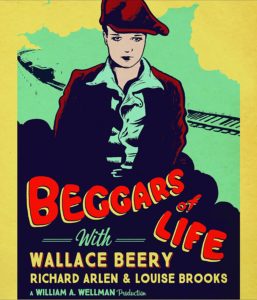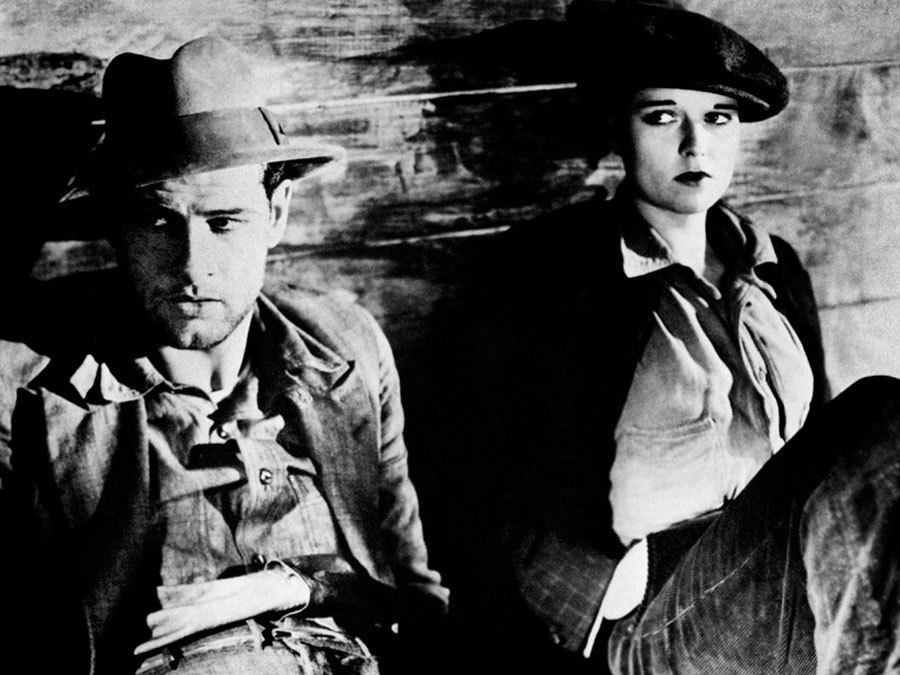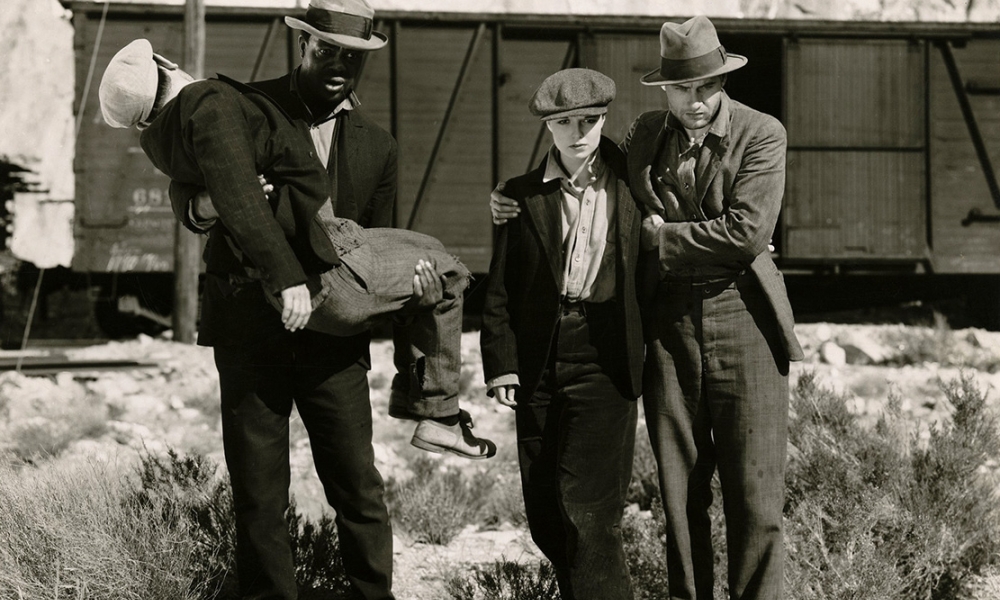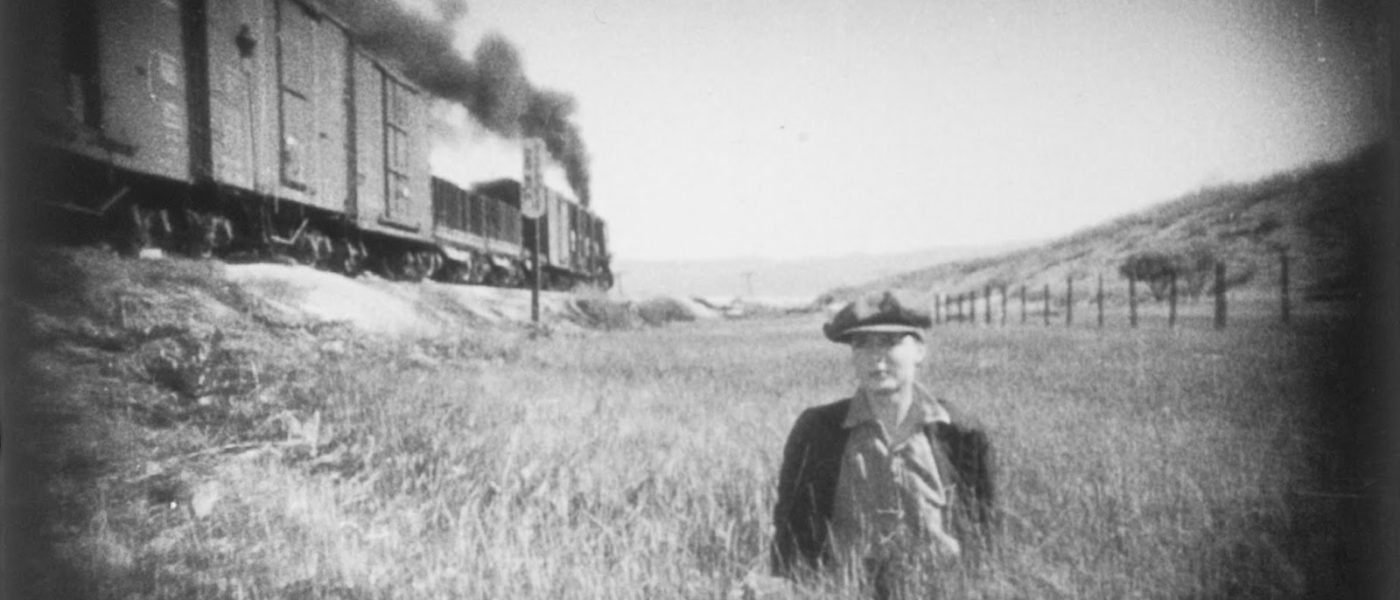Louise Brooks Hops on the Hobo Train With Wallace Beery, on the Run From the Law.
DIRECTED BY WILLIAM WELLMAN/1928
STREET DATE: AUGUST 22, 2017/KINO CLASSICS
 In the very fine booklet included with the terrific new Kino Classics Blu-Ray edition of Beggars of Life, prolific film critic Nick Pinkerton equates 1920’s hoboing to punk rock rebellion. A curiously intriguing observation, to be sure, and a socially leveling one, but also perhaps overly idealistic, even romantic in the face of poverty and desperation. Pinkerton targets the immoral railway companies that threaded the country by the hands of cruel exploitation of workers. It’s only fitting, then, that the already dejected among us should cop free rides from here to there on their infernal machines. But, while romantic down-with-the-man action is romantic to think about, that’s not what’s going on here.
In the very fine booklet included with the terrific new Kino Classics Blu-Ray edition of Beggars of Life, prolific film critic Nick Pinkerton equates 1920’s hoboing to punk rock rebellion. A curiously intriguing observation, to be sure, and a socially leveling one, but also perhaps overly idealistic, even romantic in the face of poverty and desperation. Pinkerton targets the immoral railway companies that threaded the country by the hands of cruel exploitation of workers. It’s only fitting, then, that the already dejected among us should cop free rides from here to there on their infernal machines. But, while romantic down-with-the-man action is romantic to think about, that’s not what’s going on here.
It all begins innocently enough, when a homeless drifter named Jim (Richard Arlen), hoping for a bite of breakfast, wanders into the wrong house. When the man at the table proves unresponsive, it’s because he also proves dead. Shot, in the side of his head. Before he can make tracks, the killer sees Jim seeing the dead man. Uh-oh.
It’s a man. No wait, a boy. No, wait… a girl? Yes. And not just any girl. This is “It Girl” contender, Louise Brooks. Having just murdered the man only moments earlier, she is now dead set on disappearing. But not before she shares the story of the killing and why it happened. Self defense. Over a shot of her desperate face in the here and now, Wellmen superimposes the all-too-recent memories of a lust-fueled man attempting to attack the girl. She’s backed into a corner. There’s a loaded rifle on the wall. She gets it. “Get away! Get away! I’m warning you…!” BLAM. The fusion of the desperation on her face coupled with the terrible tale are enough to convince Jim to help her, and viewers to stay with her. Desperation is palpable. The Girl, Nancy, needs to get out of town. ASAP.

Richard Arlen and Louise Brooks in BEGGARS OF LIFE.
Based oh-so-loosely on a book by popular salt-of-the-earth “hobo author” Jim Tully, Beggars of Life has its feet at all times rooted in the world of those whom President Roosevelt would call “the Forgotten Men”. The world of drifters and vagabonds pool together by night as a fire-barrel community, sharing meals, camaraderie, and maybe a slurred song or two. Thinking back on these scenes in the film, one can still hear all those things. Except, we never heard them to begin with, as this is the silent version of Beggars of Life. Such is the vibrancy of director William Wellman’s depiction of this world. (Beggars is widely noted for being the first sound film for Paramount Pictures, with Wellman having a new type of microphone invented in order to accomplish it. That version, if it’s still around, is not included on this Blu-Ray.)
Around the thirty minute mark, the real star of the picture saunters in. Wallace Beery, living up to his last name as he’s hauling a stolen keg of booze on his shoulder, is the hobo first-in-command, Oklahoma Red. Other members of the pack have similarly imposing names like “Black Mose”, “Skinny”, and “The Arkansaw Snake”. “Lame Hoppy”, a hobo with no legs, hobbles up and is readily included. Beery, the top lined star of this picture, managed to wrest the narrative focus away from Nancy and Jim and onto himself for the remainder of the movie. For viewers who might’ve arrived looking for a Louise Brooks vehicle, this is disconcerting to say the least. But in the end, it’s Oklahoma Red – and only Oklahoma Red – who has the great character arc of Beggars of Life.

Louise Brooks, arguably one of the last biggest stars of the silent era (albeit via her later European work) spends the film dressed as a boy in order to hide her identity. The gender identity statement being made in this eighty-nine plus year-old-story, whether intentional or not, is as intriguing as it is understated. The boyish charms of the outspoken Brooks were a fixture to her popular persona. The androgynous thrust of her character in Beggars of Life is so organic that by the time Oklahoma Red finally puts her in a proper dress and bonnet as a disguise (Nancy’s pursuers now officially searching for a girl in male garb), she might as well be wearing a pirate costume.
According to the two separate commentary tracks included on the fantastic looking Blu-Ray (one with Wellman’s son William Wellman, Jr., and another with Thomas Gladysz, founding director of the Louise Brooks Society), Wellman liked Brooks because of her willingness to do her own stunts. That said, it’s thankfully not Brooks performing Nancy’s most frighteningly deadly moment, in which her character fails to grab onto a moving train and is subsequently flung down a rocky hill. Nevertheless, that’s her moving around on the exterior of a different moving train only moments later, hopping from one car to another. Just beyond her famous bob, ever-strikingly framing her face just so, there’s a steely resolve just above her ultimate vulnerability. Pre and post-stardom, it was a tragic and dehumanizing life for Brooks. But nevertheless, none other than the French hero of film preservation Henri Langlois, in 1953, long after her “retirement”, made the staunch pronouncement, “There is no Garbo! There is no Dietrich! There is only Louise Brooks!”
Beggars of Life, as presented here with a musical score by the Mont Alto Motion Picture Orchestra (employing selections from the original 1928 Paramount cue-sheet) is a wholly engaging film that my four young children found themselves engrossed in to the end. It vividly portrays a morphed and even forgotten way of life that was so prevalent in the 1920s, and delivers a sacrificial aspect on behalf of these people who have so little to give up. It’s a reminder of the classist origins of mass transportation and how, in just a moment, we could all become some current equivalent of the “Forgotten Men”. As Jim postulates, “We’re all just beggars of life.”


